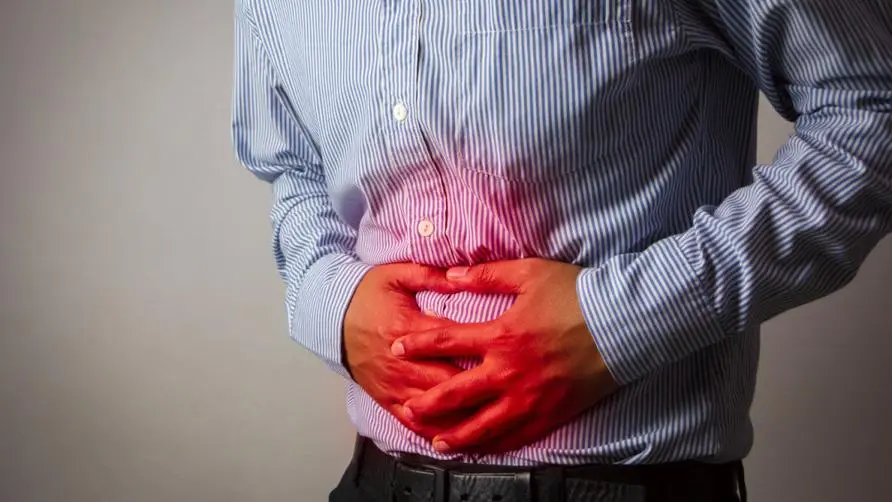Heart failure has a higher mortality rate than cancer! Understand symptoms, treatments and risk groups at once

Heart failure is classified into ABCD grade 4, the most severe of which requires heart transplant surgery to save life.
Cardiovascular events are the main cause of sudden death. “Heart failure” is often mentioned in news reports. How does it happen? Dr. Wu Yanwen, director of the Cardiovascular Medicine Center of Far Eastern Memorial Hospital, explained in an exclusive interview with “healthorn” that heart failure refers to a decrease in myocardial contractility, and the blood sent by the heart cannot supply enough oxygen to body tissues.
According to the American Heart Association’s classification, heart failure is divided into four stages: A, B, C, and D. Early heart failure has no obvious symptoms, and when the condition worsens, surgery and heart replacement may even be required to save life.
Dr. Wu Yanwen explained that grade A heart failure refers to those who have no symptoms but have risk factors such as three high blood pressure or taking cardiotoxic drugs; grade B refers to abnormalities in heart structure and function but no obvious symptoms in daily life, and precise examination is required to confirm the diagnosis; grade C Level D indicates symptoms that will affect normal life, including breathing, edema, and fatigue when walking; level D is the most serious condition, with symptoms such as severe asthma and even requiring long periods of bed rest with minimal activity.
Is heart failure more likely to die than cancer? Don’t wait for symptoms to seek medical advice?
“Among cardiology patients, heart failure has the longest hospital stay and the highest readmission rate and mortality rate. The 5-year mortality rate of heart failure patients may be as high as 50%, and the 6-month readmission rate is as high as 20%. %, patients who are repeatedly hospitalized will have a lower and lower probability of recovery and a worse prognosis. It can be said that heart cancer is more “malignant” than many malignant tumors!
Dr. Wu Yanwen said that when most patients seek medical treatment due to symptoms, they have already reached level C. If abnormal heart function can be detected early but without obvious symptoms and treated early, the heart has a chance to return to normal. Once it progresses to level D, surgery and medication are very difficult, and even a mechanical circulatory assist device (artificial heart) or even a heart transplant is required, and the mortality rate is very high.
Is heart failure related to systolic fraction? Be careful if you have ever had these diseases
“Heart failure is the final stage of all heart diseases and the “last mile” in the progression of heart diseases. Without proper treatment, various heart diseases may develop into heart failure!”
Dr. Wu Yanwen further pointed out that heart failure is a clinical symptom, not a single disease. Heart failure types can be divided into two major categories based on the level of “left ventricular ejection fraction”. The movement of the heart is similar to that of a motor. The ejection fraction refers to the percentage of blood pumped out every time the heart beats. The normal ejection fraction is between 55% and 60%. When it drops below 40%, it is not enough.
Patients with a severely reduced systolic fraction will have compensatory abnormal expansion of the heart. Many of these patients have chronic heart failure caused by coronary artery disease, or have experienced acute heart disease, acute myocardial infarction, or valvular disease but after treatment Still no improvement. If the systolic fraction is >40% but you still have heart failure symptoms such as breathlessness and fatigue, you also need treatment. These are often related to arrhythmia, hypertension, diabetes, obesity, special cardiomyopathy, etc.
High-risk groups for heart failure? Why are young people finding it more dangerous?
Dr. Wu Yanwen reminded that the risk of clinical heart failure is higher in the elderly, those with chronic diseases, smokers, too little exercise, and too much stress in life. But this does not mean that it does not appear in young people. Young people tend to ignore physical symptoms more often, thinking that they will recover naturally after a short rest, which in turn leads to delays in medical treatment. Coupled with work and social pressure, abnormal work and rest, and lack of treatment for three highs, it may all happen. Putting young people at greater risk of heart failure.
“The heart is an important organ that continues to “work”. If you find that activities that you could complete easily in the past suddenly become very strenuous, such as being out of breath after being unable to climb a few flights of stairs, edema in the lower limbs such that the legs will not rebound when pressed, or even unable to If you lie flat and need a pillow to fall asleep, this means that the water has reached your lungs and you should seek medical treatment immediately!”
Dr. Wu Yanwen said that shortness of breath, swelling, and tiredness are the main symptoms of heart failure. After consultation, the doctor will conduct a physical examination and check the heart failure indicator “NT-proBNP” through chest X-ray, electrocardiogram, and blood drawing. In the further use Tools such as cardiac ultrasound, nuclear medicine myocardial scan or coronary angiography can be used to rule out other related factors such as anemia or renal failure to determine the symptoms of heart failure caused by cardiovascular disease. However, patients with heart failure are usually unable to exercise, so exercise ECG examination is not appropriate.
How is heart failure treated? Don’t stop taking medication just because your symptoms have gone away!
Depending on the cause, heart failure can be treated with electrocautery or pacemaker installation, cardiac catheter stent surgery or bypass surgery, and medications. Dr. Wu Yanwen explained that drug treatment is mainly divided into two categories. The first category is mainly to relieve symptoms such as edema and asthma. The second type of treatment is to truly repair the heart, including regulating sympathetic nerves and heartbeat, improving vasoconstriction, and inhibiting renin- Activation of the vasotocin-aldosterone system, etc., and the sugar-removing drugs SGLT-2 inhibitors, which have been hotly debated in recent years. If patients receive proper treatment, not only can their symptoms improve, but their heart function can also return to normal, and rehospitalization and mortality rates can be reduced.
“Before 2015, medicines for heart failure were mainly symptomatic treatments, which kept patients from wheezing and swelling, but could not slow down the deterioration of the condition. Now there are more and more medicines available for the treatment of heart failure. As long as you receive regular treatment , can greatly improve the prognosis. The most important thing is to start interventional treatment as early as possible before grade C, and cooperate with the doctor to take medicine on time. Don’t stop treatment just because the symptoms are cured!”
Dr. Wu Yanwen reminded that if it is a grade A heart failure with many risk factors, such as obesity, hypertension, diabetes, and exposure to cardiotoxic drugs due to cancer. Or if you already have cardiovascular disease such as coronary artery disease or myocardial infarction, have had myocarditis due to infection, have had valvular disease in the past, or have a family history, you should pay early attention to the risk of heart failure. When you have related symptoms such as breathlessness, swelling, and fatigue, seek medical treatment as soon as possible to avoid missing golden treatment opportunities.
Further reading:





